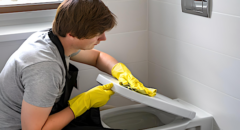A charming ceramic reminder of a Mexican vacation could end up giving you lead poisoning, a new study warns.
Exposure to high concentrations of lead — often found in glazes that line traditional Mexican ceramics, cookware and dishware — can be toxic after extended periods of handling, Canadian researchers report.
The issue has long been on the radar of public health professionals, but was highlighted recently by the lead poisoning of a 55-year-old Canadian woman. She frequently used ceramic dishware picked up in Mexico.
 “Every time she poured hot water into her mug, lead was seeping out of the glaze and into her tea,” explained study lead author Dr. Michael Fralick. He’s a general internist at the University of Toronto and a research fellow in pharmacoepidemiology at Harvard University.
“Every time she poured hot water into her mug, lead was seeping out of the glaze and into her tea,” explained study lead author Dr. Michael Fralick. He’s a general internist at the University of Toronto and a research fellow in pharmacoepidemiology at Harvard University.
According to the case report, the woman had been repeatedly hospitalized for unexplained but severe abdominal pain following prolonged use of ceramics purchased in Mexico.
Tests revealed that the glaze on both the inner and outer surfaces of the cookware — which she used to cook, boil water and eat and drink from — contained 17 percent lead.
As a result, her blood lead concentrations were nearly 36 times the upper limit of what is considered “normal,” Fralick’s team said.
The researchers described the case in the Oct. 17 issue of the Canadian Medical Association Journal.
Aside from abdominal pain, lead poisoning caused the woman to suffer anemia, joint pain and extreme fatigue.
However, after spotting the underlying cause for her abdominal pain, the patient and her son were told to stop using the Mexican wares. Over the course of the following three months, the poisoning symptoms cleared up.
Fralick stressed that occasional exposure to lead-laced ceramics would be unlikely to pose a problem.






